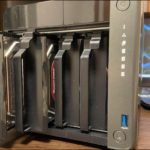No, we’re not talking SlimFast here, or a forced hike on limited rations (don’t ask). We’re talking about yet another computer term that doesn’t completely clue you in on the concept it represents.
What is Thin Provisioning?
Thin provisioning might be better thought of as, if I might risk some sketchy imagery–spandex storage. In other words, you provision enough storage for your skinny needs of the moment, and it expands as your data set gets fatter. The major upside is using no more storage than you need. For businesses, this translates to spending no more money than necessary on storage.
The downside is, if not managed correctly, a performance hit during capacity expansion. This can be a considerable or minimal hit, depending on the scheme involved. If you’re able to configure it, this will be how aggressively capacity is restricted, how much storage is added at need, and how often reapportioning occurs. Tailoring thresholds, scheduling expansion for the wee hours, and other tricks minimize the risk.
As an end user, you may have experienced thin provisioning with virtual machines or virtual hard drives. Invariably, when you create a VM or VHD, you’re asked if you want to set a fixed size, or a minimum amount that dynamically expands if required. That latter is thin provisioning. See below.

The above Windows example is one where you must consider performance. There are no user settings, capacity is added minimally according to baked-in formula. I’ve experienced slowdowns while VHDs expand, and no longer use it on Windows clients. Bummer. It just might bollox operations if more storage is needed while encoding video, recording audio, etc.

When performing any task that can’t suffer interruption or performance degradation, then thick provisioning, or setting a static capacity that’s larger than you’ll ever need is the order of the day. As most tasks of this type are handled by local storage (NAS or DAS), it’s not often a concern.
When to Use Thin Provisioning
Use thin provisioning when space is at a premium, or you’re not sure exactly how much storage capacity you’ll need, and aren’t worried about performance hits or interruption. If your thin provisioning scheme and software are robust enough, you never need to suffer a performance hit during operations.
Put bluntly, in the enterprise or with SAN, etc., thin provisioning is something you should implement. If for no other reason than to lessen storage administration workloads.
For end users, there’s little to no reason for thin provisioning; simply buy the amount of storage you need. Provision thick as it were.










